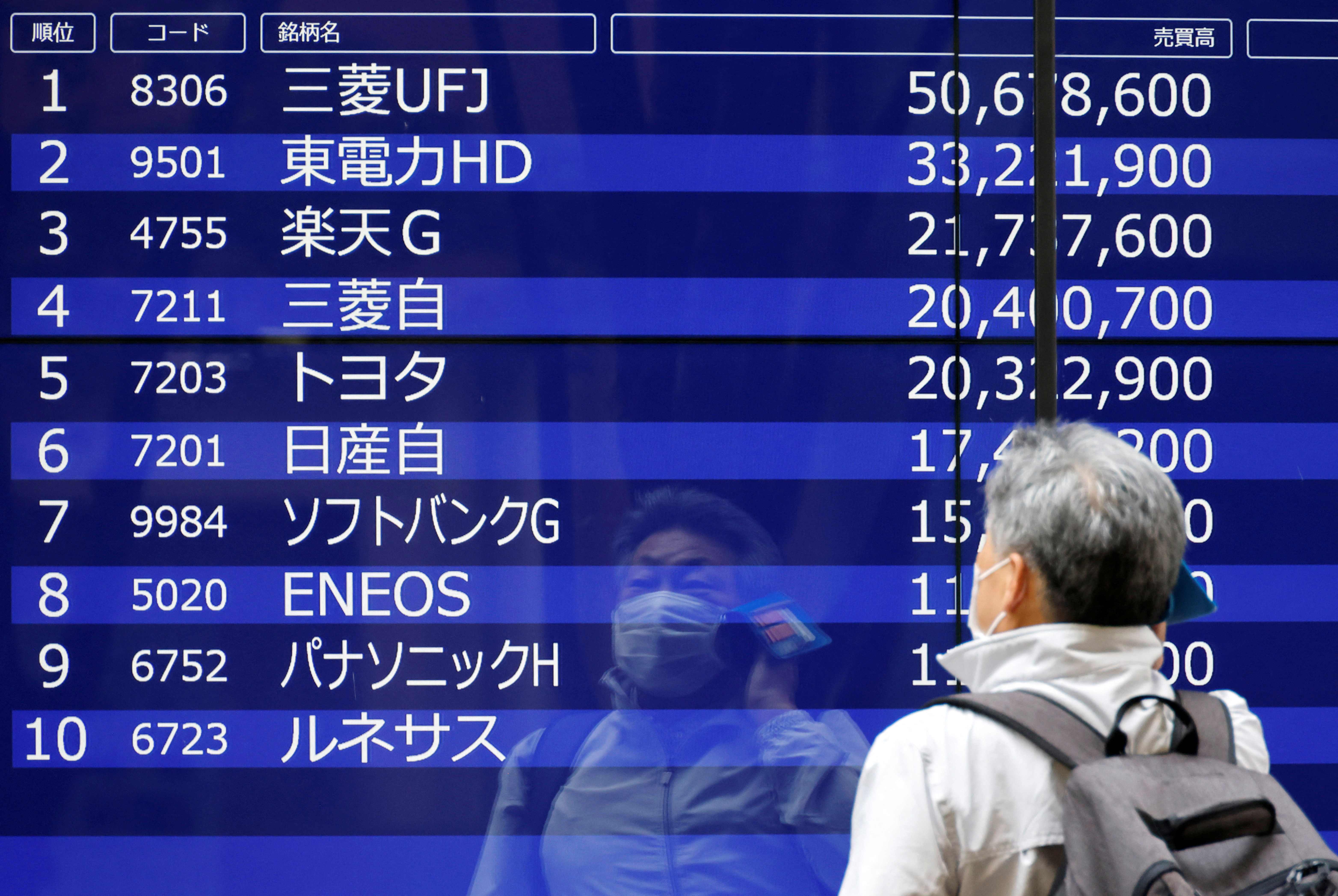
A man is reflected on an electric monitor displaying a stock quotation board outside a bank in Tokyo, Japan, June 5, 2023. REUTERS/Issei Kato/File Photo Acquire Licensing Rights
Oct 3 (Reuters) – A look at the day ahead in Asian markets from Jamie McGeever, financial markets columnist.
Yet another surge in the dollar and U.S. bond yields on Monday suggests the momentum in these assets – which set the tone for markets around the world – is not about to slow down just because the final quarter of the year is underway.
If anything, it is accelerating. Asian markets could be in for a rocky ride on Tuesday after the 10-year U.S. Treasury yield leapt above 4.70% to its highest level since 2007 and the dollar spiked to its highest in almost a year.
Investors in Asia are also awaiting the Reserve Bank of Australia’s latest policy decision and guidance on Tuesday. But it is the relentless rise in U.S. Treasury yields and the dollar that will set the tone across the region.
From an Asian FX perspective, these moves can quickly snowball. Higher U.S. yields boost the dollar, which pushes Asian currencies lower, raising speculation that countries with particularly weak exchange rates might intervene by selling FX reserves, thereby pushing up U.S. yields. Repeat to fade.
Japan is in or around this kind of territory. The dollar is a whisker from 150.00 yen – the yen is at its weakest in over 50 years on a real effective exchange rate basis – and Tokyo could intervene at any moment, potentially selling some of its huge stash of U.S. Treasuries.
But the Bank of Japan is also fighting on the domestic bond market front, announcing on Monday that it will conduct extra bond buying operations as the 10-year yield reached its highest in a decade at 0.78%.
A closely-watched BOJ survey on Monday showed that Japan’s business sentiment improved in the third quarter, with big non-manufacturers’ mood brightening to levels not seen since 1991. This would strengthen the view that the BOJ is closer to ditching 30 years of ultra-loose monetary policy, hence the rise in domestic yields.
But the yen continues to slide, suggesting it is still being driven by U.S. yields and the dollar side of the equation. Something has to give.
Australia’s central bank is expected to keep its key interest rate steady at 4.10% on Tuesday, according to a Reuters poll, but hike it to a peak of 4.35% by the end of this year as inflation remains above target.
All but two of 32 economists in a Sept. 27-28 poll expected the RBA to hold its official cash rate steady. The two outliers forecast a 25 basis-point hike.
Like nearly every currency in the world on Monday, the Aussie dollar got crushed under the wave of U.S. dollar-buying, falling more than 1% to $0.6363. It was its steepest one-day fall in a month.
Here are key developments that could provide more direction to markets on Tuesday:
– Reserve Bank of Australia rate decision
– Australia, Japan services PMIs (September)
– South Korea manufacturing PMI (September)
By Jamie McGeever; Editing by Deepa Babington
Our Standards: The Thomson Reuters Trust Principles.
Opinions expressed are those of the author. They do not reflect the views of Reuters News, which, under the Trust Principles, is committed to integrity, independence, and freedom from bias.





